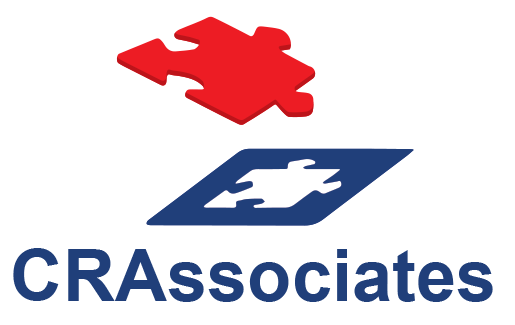Benefits of New Markets Tax Credit Financing
The federal new markets tax credit program (the “NMTC Program”) subsidy provides “gap” financing with favorable and nontraditional terms and flexible underwriting criteria, which is in the form of either:
- if the total NMTC financing is over $5 million, a forgivable loan (the “Forgiven Loan”) (at the end of the 7-year NMTC compliance period) equal to approximately 33% of the total NMTC financing (based on an assumed market pricing of $0.84 per $1.00 NMTC and transaction costs, and the Borrower must provide the remaining 67% from its other sources of funds to be used as one or more “Leverage Loans,” the proceeds of which flow through the IRS Approved Leverage Structure, which is then provided to the Borrower as a senior NMTC loan (the “Senior NMTC Loan”)); or
- if the total NMTC financing is under $5 million, a non-forgivable loan (the “Non-Forgiven Loan”) equal to 100% of the NMTC financing (which may mature up to 40 years).
Our discussion applies to both types of NMTC Program subsidies (such as legal requirements and underwriting criteria).
The smaller NMTC Program subsidy (i.e., the Non-Forgiven NMTC Loan) (a) has nontraditional and favorable terms, and flexible underwriting criteria that are similar to those of the forgivable loan (except that it is not forgiven); and (b) is subject to the same legal and underwriting requirements as those that apply to the Forgiven NMTC Loan.
Generally, the economic and non-economic benefits of the Program (whether in the form of the Forgiven NMTC Loan or the Non-Forgiven NMTC Loan) include:
- gap financing (which is intended to provide the final piece of the financing required
- with approximate 1.0% to 1.2% interest-only payments during the 7-year NMTC compliance period;
- each of the Senior NMTC Loan, Forgiven NMTC Loan, and Non-Forgiven NMTC Loan, as applicable, is generally, subordinated to other creditors;
- nontraditional and favorable terms, and flexible underwriting criteria;
- the ability to obtain other financing as a result of the NMTC financing;
- the ability to “leverage” other sources of financing for a multiplier economic benefit;
- there are “softer” foreclosure and enforcement rights if there is a default; and
- substantial community impacts are provided to residents in “Low-Income Communities” and “Targeted Populations,” including Low-Income Persons,” minorities, women and veterans who otherwise lack adequate employment and community or consumer goods and services.
As previously discussed, if the size of the NMTC financing is at least $5 million, then the NMTC Program subsidy is in the form of the Forgiven NMTC Loan.
Given that the Forgiven NMTC Loan is (a) forgiven at the end of 7 years, and (b) may be subordinated to other financing, creditors and equity providers generally view this forgivable loan as “equity” or a “grant.”
Therefore, it is not uncommon that a Borrower will be able to obtain additional debt and/or equity financing in the traditional market place.
Good Borrower and Project Candidates for NMTC Financing
Each of the following are good types of for-profit’s and nonprofit’s operations and projects for NMTC financing:
- manufacturing facilities/operations;
- health care facilities/operations;
- grocery stores/operations;
- charter and independent schools/operations;
- qualified mixed-use projects (i.e., those that satisfy the “80/20 Test”);
- community facilities/operations;
- renewable energy and recycling facilities/operations.
Obtaining the NMTC Program subsidy is very competitive, and important factors include whether the Borrower or project:
- is located in a “Highly Distressed” “Low-Income Community;”
- will provide substantial community impacts to residents in “Low-Income Communities” or “Targeted Populations” (including “Low-Income Persons,” minorities, women and veterans);
- has strong local support; and/or
- is located in an “underserved state,” which can include: Alabama, Arkansas, Florida, Georgia, Indiana, Kansas, Nevada, Tennessee, Texas, West Virginia, Wyoming, Puerto Rico, American Samoa, Guam, Northern Mariana Islands and US Virgin Islands.
The Intent of the NMTC Program
 The intent of the NMTC Program is to provide investment capital to businesses, nonprofits and real estate projects (including the purchase of equipment and the funding of working capital) that (a) are located in “Low-Income Communities” or otherwise benefit “Targeted Populations,” and (b) otherwise cannot obtain traditional financing (including closing costs).
The intent of the NMTC Program is to provide investment capital to businesses, nonprofits and real estate projects (including the purchase of equipment and the funding of working capital) that (a) are located in “Low-Income Communities” or otherwise benefit “Targeted Populations,” and (b) otherwise cannot obtain traditional financing (including closing costs).
The NMTC Program provides gap financing in the form of a low interest-only loan, which is forgiven at the end of the 7-year NMTC compliance period.
This forgivable loan is effectively a grant equal to approximately 33% of the total project and/or operational costs of the NMTC financing.
NMTC Financing Facilitated by “Allocatees” and “CDEs

- Each year, the Community Development Financial Institutions Fund (the “CDFI Fund,” which administers the NMTC Program) provides non-monetary NMTC allocation authority awards (“NMTC Allocation Awards”) to “qualified community development entities (“CDEs”), after an extremely competitive process.
- If a CDE receives such an award, it becomes an “Allocatee.”
- A NMTC Allocation Award authorizes an Allocatee to designate its NMTC financings as entitled to NMTCs.
 Borrowers then have to compete to obtain NMTC financing from one or more Allocatees.
Borrowers then have to compete to obtain NMTC financing from one or more Allocatees.- Each Allocatee (a) has a service area, which is national, regional, multi-state, or local; and (b) targets certain types of Borrowers and projects, which provide substantial community impact in its service area.
- Each Allocatee spins off a separate CDE for each NMTC financing.
- It is important to understand the 2 loans provided by NMTC financing.

The Forgiven NMTC Loan is equal to the (x) size of the NMTC financing (i.e., the “Qualified Equity Investment”), times (y) the 39% NMTCs, times (z) pricing of the NMTCs.
The Senior NMTC Loan is equal to the (x) NMTC financing/Qualified Equity Investment, less (y) the amount of the Forgiven NMTC Loan.
Example: If the size of the NMTC financing/Qualified Equity Investment is $10 million and the assumed market pricing is $0.84 per $1.00 NMTC, then the Forgiven NMTC Loan is approximately $3.3 million (i.e., $10 million NMTC financing/Qualified Equity Investment x 39% NMTCs x $0.84). Then, the Senior NMTC Loan is equal to $6.7 million (i.e., $10 million NMTC financing/Qualified Equity Investment less the $3.3 million Forgiven NMTC Loan), which is provided by the Borrower’s other sources of financing and used in the IRS Approved Leverage Structure, as previously discussed.
Steps to Facilitate the Forgiven NMTC Loan
The steps to facilitate the Forgiven NMTC Loan include:
 an Allocatee receives a non-monetary NMTC Allocation Award;
an Allocatee receives a non-monetary NMTC Allocation Award;- such Allocatee spins off a separate CDE for each NMTC financing;
- a NMTC Investor makes a capital contribution in its wholly-owned Investment Fund (in the amount of the “purchase price” of the NMTCs, which is approximately 33% of the NMTC financing/Qualified Equity Investment);
- the Borrower uses its other sources of financing to provide the 67% of the remaining amount of the NMTC financing/Qualified Equity Investment (which are used as one or more “Leverage Loans”, the proceeds of which flow through the IRS Approved Leverage Structure, which is then provided to the Borrower as the Senior NMTC Loan);
- using the NMTC Investor’s capital contribution and proceeds of the “Leverage Loan(s), the Investment Fund makes a capital contribution to such CDE;
- such Allocatee “sub-allocates” a portion of its non-monetary NMTC Allocation Award to such CDE in the amount of the Investment Fund’s capital contribution;
- such CDE designates such Investment Fund’s capital contribution as a “Qualified Equity Investment” (a “QEI,” on which the 39% NMTCs are based); and
- such CDE uses the QEI proceeds to make 2 loans to the Borrower: (a) the Senior NMTC Loan (the terms of which match the “Leverage Loan(s)”); and (b) the Forgiven NMTC Loan.
How the Forgiven NMTC Loan Technically Works
 The Borrower does not recognize the NMTCs. Instead, the NMTC Investor effectively “purchases” the NMTCs.
The Borrower does not recognize the NMTCs. Instead, the NMTC Investor effectively “purchases” the NMTCs.
The NMTCs are equal to 39% of the size of the NMTC financing/QEI over the 7-year NMTC compliance period (which are a dollar for dollar offset against federal income taxes).
As previously discussed, for example (and as illustrated in the link below, entitled “Basic NMTC Structure”):
- if a NMTC financing/QEI is $10 million, the NMTCs are $3.9 million; and
- if the NMTC Investor “purchases” such tax credits for $0.84 (based on assumed market pricing), then:
- the Forgiven NMTC Loan would be $3.3 million (i.e., $3.9 million NMTCs x $0.84 assumed market pricing); and
- the NMTC Investor receives a return equal to (x) 18% (i.e., ($3.9 million NMTCs – $3.3 million purchase price) / $3.9 million NMTCs, as discounted by time value of money over 7 years), plus (y) a small amount of distributions, as well as credit under the Community Reinvestment Act; and, therefore, the NMTC Investor is able to forgive the Forgiven NMTC Loan.
How NMTC Transaction Participants Benefit
The benefits of the Forgiven NMTC Loan (which arises from the 39% NMTCs) is shared among each of:
- the NMTC investor:
- receives the NMTCs equal to 39% of the QEI;
- receives an internal rate of return on the QEI;
- generally receives credit under the Credit Reinvestment Act; and
- is subject to less capital risk (because it borrows a portion of the QEI from one or more “Leverage Lender(s)”);
- the Borrower:
- receives the Forgiven NMTC Loan equal to the gap in available financing; and
- such loan is forgiven at the end of the 7-year NMTC compliance period; and
- the Allocatee:
- receives fees for facilitating the NMTC financing; and
- has no capital at risk (because the QEI proceeds (rather than its own funds) are used to make the 2 loans to the Borrower).
NMTC financing can be combined with state NMTCs, historic tax credit financing, and other community and economic development programs (such as opportunity zone financing, and those provided by the USDA Programs and the CDFI Programs). However, NMTC financing cannot finance any square feet to the extent that low-income housing tax credits finance such square feet.
Although the typical NMTC financing structure is quite complex based on all of the sources of funds, the fundamental initial structure of any NMTC financing is illustrated in the following links:
For a discussion and illustration of the unwind of NMTC financing after the 7-year NMTC compliance period, please click on the following link:
For a more detailed discussion of the benefits of NMTC financing to a Borrower, and applicable legal requirements and underwriting requirements, please click on the following link:
Please click the following link to watch our pre-recorded webinar:
To apply as a Borrower for NMTC financing, please click on the following link:
For a more detailed discussion of the benefits of participating as a CDE in NMTC financing, and applicable legal requirements and underwriting requirements, please click on the following link:
To apply as a CDE for a NMTC Allocation Award, please click the following link:










